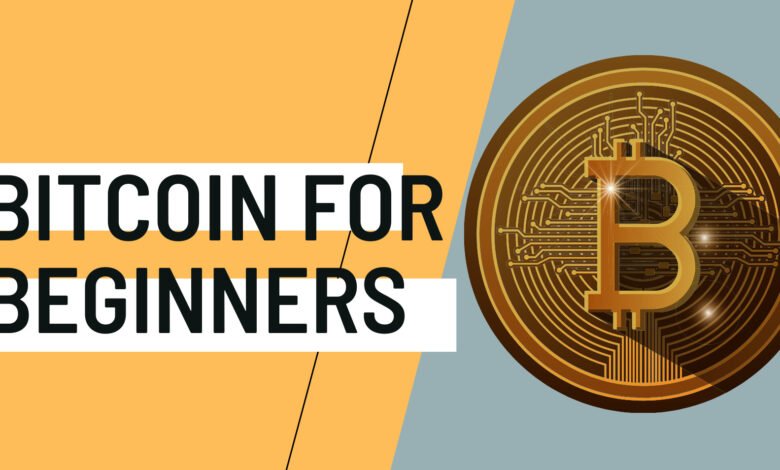
Learning how to buy Bitcoin for beginners can feel overwhelming, but it doesn’t have to be. With cryptocurrency becoming mainstream and Bitcoin reaching new heights in 2025, millions of newcomers are seeking a clear, straightforward path to their first Bitcoin purchase. This comprehensive guide will walk you through every single step of buying Bitcoin safely and securely, from setting up your first digital wallet to making your initial investment.
Whether you’re entirely new to cryptocurrency or just need guidance on the purchasing process, this step-by-step approach will demystify Bitcoin buying. We’ll cover everything from choosing the right exchange platform to understanding security best practices, ensuring you have the confidence to enter the world of digital currency. By the end of this guide, you’ll have all the knowledge needed to buy Bitcoin safely and start building your cryptocurrency portfolio.
What is Bitcoin and Why Should Beginners Consider It?
Bitcoin, created in 2009 by the mysterious Satoshi Nakamoto, is the world’s first and most valuable cryptocurrency. Often called “digital gold,” Bitcoin operates on a decentralized network called blockchain, which means no single government or institution controls it. For beginners, Bitcoin represents an entry point into the revolutionary world of digital finance.
Understanding Bitcoin’s fundamentals is crucial before making your first purchase. Unlike traditional currencies, Bitcoin has a limited supply of 21 million coins, making it naturally deflationary. This scarcity, combined with growing institutional adoption, has contributed to Bitcoin’s value appreciation over time. Major companies like Tesla, MicroStrategy, and El Salvador have added Bitcoin to their balance sheets, signaling mainstream acceptance.
For beginners, Bitcoin offers several compelling advantages. It provides portfolio diversification beyond traditional stocks and bonds, serves as a hedge against inflation, and offers 24/7 trading opportunities. Additionally, Bitcoin transactions can be faster and cheaper than conventional international transfers, making it attractive for global commerce.
The cryptocurrency market has matured significantly since Bitcoin’s early days. Regulatory clarity is improving, with countries like the United States developing clearer frameworks for cryptocurrency operations. This regulatory progress makes Bitcoin more accessible and safer for everyday investors.
Prerequisite What You Need Before Buying Bitcoin
Before diving into how to buy Bitcoin for beginners step by step, you’ll need several essential items prepared. First, ensure you have a valid government-issued ID, such as a driver’s license or passport. Most reputable cryptocurrency exchanges require identity verification to comply with Know Your Customer (KYC) regulations.
Next, you’ll need a bank account, debit card, or credit card for funding your Bitcoin purchases. While credit cards offer convenience, they often come with higher fees and may be treated as cash advances by your bank. Debit cards and bank transfers typically offer lower fees and are preferred by most beginners.

Having a secure email address dedicated to cryptocurrency activities is highly recommended. This email should have two-factor authentication enabled and shouldn’t be used for other online activities. Consider creating a new email specifically for your crypto journey to enhance security.
You’ll also need a smartphone for mobile app access and two-factor authentication. Most modern cryptocurrency exchanges offer mobile apps that make buying and managing Bitcoin more convenient. Additionally, authenticator apps like Google Authenticator or Authy provide essential security features.
Finally, ensure you have a reliable internet connection and a computer or smartphone with updated security software. Cybersecurity is paramount in cryptocurrency, so keeping your devices secure protects your investments.
Research and Choose a Reputable Cryptocurrency Exchange
The first crucial step in buying Bitcoin for beginners involves selecting a trustworthy cryptocurrency exchange. An exchange is a digital platform where you can buy, sell, and trade cryptocurrencies using traditional currency or other digital assets.
For beginners, consider these top-rated exchanges that prioritize user-friendly interfaces and security:
Coinbase stands out as the most beginner-friendly option, offering an intuitive interface and educational resources. It’s publicly traded and regulated in the United States, providing additional credibility. However, Coinbase charges higher fees compared to other platforms.
Kraken offers competitive fees and robust security features, making it excellent for beginners who want to minimize costs. The platform provides comprehensive educational materials and has never been successfully hacked in its operational history.
Binance.US provides access to a wide variety of cryptocurrencies with competitive trading fees. While the interface might seem complex initially, it offers powerful tools as you advance in your cryptocurrency journey.
Gemini focuses heavily on security and regulatory compliance, making it ideal for cautious beginners. Founded by the Winklevoss twins, Gemini emphasizes trust and transparency in all operations.
When evaluating exchanges, consider factors like security measures, fee structures, payment methods accepted, customer support quality, and user interface design. Read reviews from multiple sources and never rush this decision, as your exchange choice significantly impacts your Bitcoin buying experience.
Research each platform’s insurance policies for digital assets. Reputable exchanges often carry insurance to protect user funds in case of security breaches or operational failures.
Create and Verify Your Exchange Account
After selecting your preferred exchange, the next step in buying Bitcoin for beginners is to create and verify your account. Start by visiting the official website of your chosen exchange—never click on links from emails or social media to avoid phishing scams.
Click the “Sign Up” or “Create Account” button and provide your email address and a strong, unique password. Your password should contain at least 12 characters, including uppercase and lowercase letters, numbers, and special characters. Never reuse passwords from other accounts.
After initial registration, you’ll need to verify your email address by clicking a link sent to your inbox. Check your spam folder if you don’t receive the verification email within a few minutes.
The next phase involves identity verification, which typically requires uploading photos of your government-issued ID and sometimes a selfie for facial recognition. This process, known as KYC (Know Your Customer), helps exchanges comply with financial regulations and prevents fraud.
Some exchanges implement tiered verification systems. Basic verification might allow limited trading amounts, while full verification unlocks higher limits and additional features. Complete the highest verification level available to maximize your trading capabilities.
During verification, provide accurate information matching your official documents exactly. Any discrepancies can delay approval or result in account rejection. The verification process typically takes 24-48 hours, but can extend longer during high-demand periods.
Enable two-factor authentication (2FA) immediately after account creation. Download an authenticator app like Google Authenticator or Authy, then follow the exchange’s instructions to link your account. This adds a crucial security layer protecting your funds.
Secure Your Account with Proper Security Measures
Security is the most critical aspect of buying Bitcoin for beginners, step by step. Cryptocurrency transactions are irreversible, making security breaches potentially devastating for beginners.
Start with two-factor authentication (2FA), which requires a second verification step beyond your password. Use authenticator apps rather than SMS-based 2FA, as phone numbers can be hijacked through SIM swapping attacks. Google Authenticator, Authy, and Microsoft Authenticator are popular, secure options.
Create a dedicated email address exclusively for cryptocurrency activities. This email should have a strong password and 2FA enabled. Avoid using this email for social media, shopping, or other online activities that might expose it to data breaches.
Enable all available security features on your chosen exchange. Many platforms offer withdrawal allowlisting, which only allows Bitcoin transfers to pre-approved addresses. Others provide email and SMS notifications for all account activities, helping you monitor unauthorized access attempts.
Consider using a VPN (Virtual Private Network) when accessing your cryptocurrency accounts, especially on public Wi-Fi networks. VPNs encrypt your internet connection and mask your IP address, adding another security layer.
Never share your login credentials, recovery phrases, or private keys with anyone. Legitimate exchanges and support teams will never ask for this sensitive information. Be highly cautious of phishing emails that mimic your email’s appearance—always navigate directly to the official website.
Store backup codes and recovery phrases in multiple secure locations. Write them down on paper and store copies in different physical locations, such as a home safe and a bank safety deposit box. Never store this information digitally or in cloud storage services.
Also Read: How to Invest in NFT Cryptocurrency Complete Beginner’s Guide 2025
Add a Payment Method to Your Account
Adding a payment method is essential for buying Bitcoin for beginners, step by step. Most exchanges accept various payment options, each with different fees, processing times, and limits.
Bank transfers (ACH) typically offer the lowest fees and highest purchase limits but require 3-5 business days for processing. This method works well for planned purchases when timing isn’t critical. Bank transfers also provide the most cost-effective way to buy larger amounts of Bitcoin.
Debit cards provide instant purchases with moderate fees, usually ranging from 1.5% to 4%. This option suits beginners who want immediate Bitcoin ownership and don’t mind paying slightly higher costs for convenience.
Credit cards offer instant purchases but come with the highest fees, often 3-6% or more. Additionally, many credit card companies treat cryptocurrency purchases as cash advances, triggering additional fees and higher interest rates. Use credit cards only for small, emergency purchases.
Wire transfers work well for large purchases, offering high limits with moderate fees. However, they require manual processing and can take 1-3 business days to complete.
PayPal integration is available on some exchanges, providing familiar payment processing for users comfortable with the platform. However, fees can be substantial, and not all exchanges support PayPal funding.
When adding payment methods, ensure all information matches your verified identity exactly. Banks and exchanges cross-reference this data to prevent fraud. Some exchanges may make small test deposits to verify bank account ownership—be prepared to confirm these amounts.
Consider starting with smaller amounts using faster payment methods to familiarize yourself with the process before making larger investments through bank transfers.
How to Buy Bitcoin for Beginners Step by Step – The Purchase Process
Now we reach the core of how to buy Bitcoin for beginners step by step—making your first Bitcoin purchase. Navigate to your exchange’s “Buy” or “Trade” section, which should be prominently displayed on the main dashboard.
Select Bitcoin (BTC) from the list of available cryptocurrencies. Be careful not to confuse Bitcoin with Bitcoin Cash (BCH) or other Bitcoin variants. The ticker symbol BTC always represents the original Bitcoin.
Choose your preferred payment method from the options you’ve added to your account. Consider the trade-offs between fees and processing time based on your immediate needs.
Enter the amount you want to purchase. You can typically specify either the dollar amount you wish to spend or the amount of Bitcoin you want to buy. For beginners, selecting a dollar amount often feels more intuitive.
Most exchanges display a preview showing exactly how much Bitcoin you’ll receive after fees. Review this information carefully, as costs can vary significantly between payment methods and purchase amounts.
Market orders execute immediately at the current market price, while limit orders allow you to specify a maximum price you’re willing to pay. For beginners, market orders provide simplicity, though limit orders can help minimize costs during volatile periods.
Double-check all transaction details before confirming your purchase. Verify the amount, payment method, and fee structure. Once confirmed, cryptocurrency transactions cannot be reversed.
After confirmation, you’ll see the Bitcoin appear in your exchange wallet, though bank transfer purchases might show as “pending” until the payment processes are complete. Keep records of all transactions for tax reporting purposes.
Understanding Bitcoin Storage Options
After purchasing Bitcoin, understanding storage options becomes crucial for beginners who want to buy Bitcoin step by step. You have several choices, each with different security and convenience trade-offs.
Exchange Wallets automatically store your Bitcoin on the exchange where you purchased it. This offers maximum convenience for trading and selling, but provides less security since you don’t control the private keys. Exchange wallets work well for small amounts and active trading.
Software Wallets (also called hot wallets) are applications you install on your computer or smartphone. Popular options include Electrum, Exodus, and Mycelium. These wallets give you control over your private keys while maintaining reasonable convenience for regular transactions.
Hardware Wallets (cold wallets) are physical devices that store your Bitcoin offline. Ledger Nano S Plus, Trezor Model T, and KeepKey represent popular hardware wallet options. These provide maximum security for long-term storage but less convenience for frequent transactions.
Paper Wallets involve printing your Bitcoin private keys and addresses on paper, then storing the paper securely. At the same time, highly secure when appropriately generated, paper wallets require technical knowledge and careful handling to avoid loss.
Multisig Wallets require multiple signatures to authorize transactions, distributing security across multiple devices or people. While more complex, multisig wallets provide excellent protection for extensive Bitcoin holdings.
For beginners, starting with small amounts in exchange wallets while learning about other options makes sense. As your Bitcoin holdings grow, gradually transition to hardware wallets for enhanced security.
Never store large amounts of Bitcoin permanently on exchanges. History shows that even reputable exchanges can experience security breaches or operational failures.
Best Practices for Bitcoin Security and Storage
Implementing proper security practices is essential for buying Bitcoin for beginners step by step. These practices protect your investment from theft, loss, and technical failures.
Create multiple backups of your wallet information, especially seed phrases or private keys. Write these down on paper using permanent ink, then store copies in different secure locations. Fire-resistant safes, bank safety deposit boxes, and trusted family members’ homes provide good storage options.
Never store wallet information digitally unless encrypted with strong passwords. Avoid cloud storage services, email, or any internet-connected device for backup storage. Digital copies create additional attack vectors for hackers.

Use passphrases (25th word) with hardware wallets for additional security. This creates a hidden wallet that remains invisible even if someone accesses your hardware wallet and seed phrase—store passphrases separately from seed phrases.
Regularly update wallet software and firmware to patch security vulnerabilities. Enable automatic updates when available, but verify updates come from official sources to avoid malicious software.
Practice good computer hygiene by keeping operating systems updated, using reputable antivirus software, and avoiding suspicious downloads or websites. Malware can steal wallet information or redirect Bitcoin transactions to attacker addresses.
Consider using dedicated devices for cryptocurrency activities. Old smartphones or computers exclusively used for Bitcoin management reduce exposure to malware and other security threats.
Test wallet recovery procedures with small amounts before storing significant Bitcoin quantities. Understanding how to recover your wallet ensures you won’t lose access due to technical issues or forgotten passwords.
Common Mistakes Beginners Make When Buying Bitcoin
Understanding common pitfalls helps ensure success when buying Bitcoin for beginners, step by step. Many beginners make expensive mistakes that could easily be avoided with proper knowledge.
FOMO (Fear of Missing Out) drives many beginners to make impulsive purchases during price surges. Bitcoin’s volatility means prices can change dramatically within hours or days. Develop a systematic investment approach rather than emotional buying decisions.
Investing more than you can afford to lose represents perhaps the most dangerous mistake. Cryptocurrency remains highly volatile and speculative. Only invest money you can afford to lose completely without affecting your financial stability.
Using unsecured or fake exchanges can result in total loss of funds. Always verify exchange legitimacy through official websites, regulatory registrations, and user reviews from multiple sources. Avoid exchanges promising unrealistic returns or minimal fees.
Forgetting or losing wallet passwords and seed phrases permanently locks you out of your Bitcoin. Create secure backups immediately after wallet creation and test recovery procedures with small amounts.
Falling for cryptocurrency scams costs beginners millions annually. Common scams include fake celebrity endorsements, “doubling” schemes, and phishing websites. Remember: legitimate businesses never ask for your private keys or seed phrases.
Panic selling during market downturns locks in losses unnecessarily. Bitcoin historically recovers from significant price drops, rewarding patient investors. Develop a long-term perspective and avoid emotional decision-making.
Ignoring tax implications can create legal problems. Most countries treat Bitcoin sales as taxable events. Keep detailed records of all purchases, sales, and transactions for accurate tax reporting.
How Much Bitcoin Should Beginners Buy?
Determining appropriate investment amounts is crucial for buying Bitcoin for beginners step by step. Several factors should influence your decision-making process.

Start small with amounts you can afford to lose entirely. Many financial advisors recommend limiting cryptocurrency investments to 5-10% of your total investment portfolio. This provides meaningful exposure while limiting potential losses.
Dollar-cost averaging (DCA) involves making regular, smaller purchases regardless of Bitcoin’s current price. This strategy reduces the impact of volatility and removes timing pressure from your investment decisions. For example, buying $100 worth of Bitcoin weekly rather than $1,200 at once.
Consider your risk tolerance honestly. Bitcoin can lose 50% or more of its value within months, though it has historically recovered and reached new highs. Conservative investors might prefer smaller allocations, while risk-tolerant investors might invest more heavily.
Age and investment timeline matter significantly. Younger investors with longer time horizons can typically afford higher-risk investments like Bitcoin. Older investors approaching retirement might want more conservative allocations.
Emergency fund first – ensure you have 3-6 months of expenses saved before investing in Bitcoin. Cryptocurrency should never replace essential emergency savings or retirement contributions.
Education investment can be as valuable as financial investment. Consider spending time learning about Bitcoin, blockchain technology, and cryptocurrency markets before making significant investments.
Many successful Bitcoin investors started with small amounts, learned from experience, and then gradually increased their positions as knowledge and confidence grew.
Tax Implications of Buying Bitcoin
Understanding tax obligations is crucial for buying Bitcoin for beginners, step by step. Most countries treat Bitcoin as property rather than currency, creating specific tax implications.
In the United States, Bitcoin purchases aren’t taxable events, but selling Bitcoin for profit creates capital gains tax obligations. Short-term gains (assets held less than one year) are taxed as ordinary income, while long-term gains receive preferential tax rates.
Record keeping becomes crucial for accurate tax reporting. Document every Bitcoin transaction, including purchase date, amount, price, and fees paid. Many exchanges provide transaction history downloads for tax preparation.
Using Bitcoin for purchases creates taxable events in most jurisdictions. If you buy coffee with Bitcoin worth more than your purchase price, you owe capital gains tax on the difference. This makes Bitcoin spending potentially complex from a tax perspective.
Mining and earning Bitcoin through work or services creates immediate income tax obligations at fair market value when received. Subsequent sales create additional capital gains or losses.
International considerations vary significantly by country. Some nations have banned Bitcoin entirely, while others treat it favorably for tax purposes. Research your local laws or consult tax professionals for guidance.
Tax software like CoinTracker, Koinly, or TurboTax Crypto can help calculate cryptocurrency tax obligations automatically. These services integrate with major exchanges to import transaction data and generate necessary tax forms.
Professional advice becomes valuable for significant Bitcoin investments. Tax laws change frequently, and experienced guidance ensures compliance while minimizing tax obligations.
Bitcoin Price Volatility What Beginners Need to Know
Understanding Bitcoin’s price behavior is crucial for buying Bitcoin for beginners step by step. Bitcoin experiences much higher volatility than traditional investments, requiring mental preparation and strategic planning.
Historical volatility shows Bitcoin can gain or lose 20-30% in a single day, with larger movements during major market events. These swings can be psychologically challenging for new investors unaccustomed to such price movements.
Market cycles tend to follow roughly four-year patterns, often correlated with Bitcoin’s halving events when mining rewards decrease. Understanding these cycles helps set appropriate expectations for price movements and investment timelines.
External factors significantly influence Bitcoin prices. Regulatory announcements, institutional adoption, macroeconomic events, and even social media posts can trigger major price movements. Stay informed about news that might affect cryptocurrency markets.
Emotional management becomes crucial during volatile periods. Develop strategies for handling both significant gains and losses without making impulsive decisions. Many successful investors ignore daily price movements entirely, focusing on long-term trends.
Position sizing should account for volatility. If Bitcoin losing 50% of its value would cause financial stress or sleepless nights, you’re probably investing too much in positions to maintain emotional stability during downturns.
Zoom out when evaluating Bitcoin’s performance. Daily or weekly charts can appear chaotic, while yearly charts often show clearer trends. Long-term thinking typically produces better investment outcomes than short-term trading.
Long-term vs Short-term Bitcoin Investment Strategies
Developing an investment strategy is essential for buying Bitcoin for beginners, step by step. Your approach should align with financial goals, risk tolerance, and time availability.
HODLing (Hold On for Dear Life) involves buying Bitcoin and holding it long-term regardless of price movements. This strategy assumes Bitcoin’s long-term trajectory is upward despite short-term volatility. HODLing requires patience but minimizes trading costs and tax complications.
Dollar-cost averaging systematically purchases Bitcoin at regular intervals, reducing the impact of timing and volatility. This approach works well for beginners who want Bitcoin exposure without trying to time the market perfectly.
Trading strategies attempt to profit from Bitcoin’s price movements through buying low and selling high. However, successful trading requires significant time, knowledge, and emotional discipline. Most beginners lose money trying to trade actively.
Swing trading involves holding positions for days or weeks, attempting to capture medium-term price movements. This requires more knowledge than HODLing but less intensive monitoring than day trading.
Rebalancing involves periodically adjusting your Bitcoin allocation to maintain target percentages within your overall portfolio. If Bitcoin performs exceptionally well, you might sell some to maintain your desired allocation.
Taking profits strategically can help manage risk while maintaining Bitcoin exposure. Some investors sell predetermined percentages at specific price levels, securing gains while keeping upside potential.
For beginners, simpler strategies like HODLing or dollar-cost averaging typically produce better results than complex trading approaches.
Building Your Bitcoin Knowledge Base
Continuous learning is vital for how to buy Bitcoin for beginners, step by step. The cryptocurrency space evolves rapidly, making ongoing education essential for investment success.
Reputable news sources include CoinDesk, Bitcoin Magazine, Decrypt, and The Block. These publications provide balanced reporting on Bitcoin developments, regulatory changes, and market analysis. Avoid sources making unrealistic price predictions or promoting get-rich-quick schemes.
Educational resources like the Bitcoin Whitepaper, Andreas Antonopoulos’s books, and university courses provide a more profound understanding of Bitcoin’s technology and economics. MIT and other prestigious universities offer free cryptocurrency courses online.
Podcasts offer convenient learning during commutes or exercise. Popular Bitcoin podcasts include “What Bitcoin Did,” “The Bitcoin Standard Podcast,” and “Tales from the Crypt.” These feature interviews with Bitcoin experts and industry leaders.
YouTube channels like “99Bitcoins,” “Coin Bureau,” and “Andreas Antonopoulos” provide visual explanations of complex Bitcoin concepts. However, be cautious of channels promoting specific investment advice or altcoin promotions.
Community forums like Reddit’s r/Bitcoin and BitcoinTalk provide peer discussions and real-world experiences. However, treat advice from anonymous internet users skeptically and always verify information through multiple sources.
Technical documentation from wallet providers and exchanges helps understand security features and proper usage. Many beginners overlook these resources, missing important safety information.
Books like “The Bitcoin Standard” by Saifedean Ammous and “Mastering Bitcoin” by Andreas Antonopoulos provide comprehensive Bitcoin education. Physical books offer distraction-free learning opportunities.
Conclusion
Learning how to buy Bitcoin for beginners step by step doesn’t have to be overwhelming when you follow a systematic approach. This comprehensive guide has walked you through every essential step, from choosing a reputable exchange to implementing proper security measures. Remember that Bitcoin investment requires patience, continuous learning, and careful risk management.
The key to successful Bitcoin investing lies in starting small, using reputable platforms, prioritizing security, and maintaining a long-term perspective. Whether you’re looking to diversify your investment portfolio or explore the world of digital currency, following these step-by-step instructions provides a solid foundation for your Bitcoin journey.








